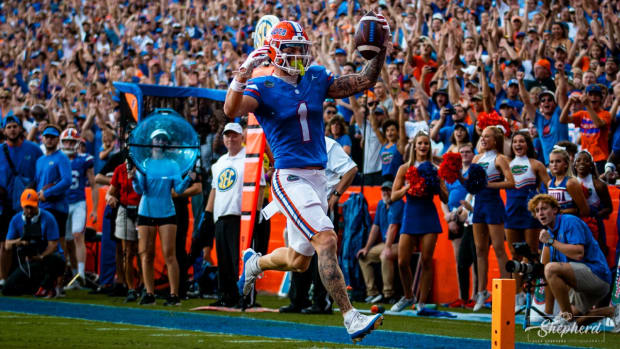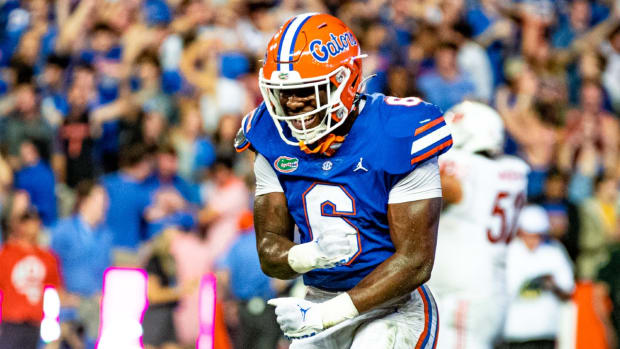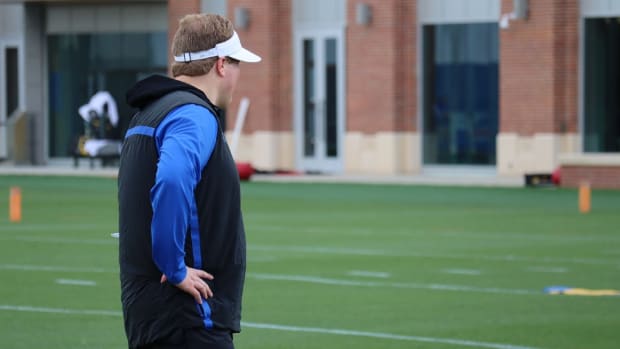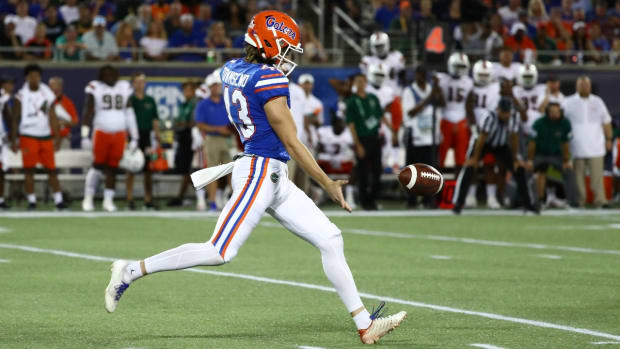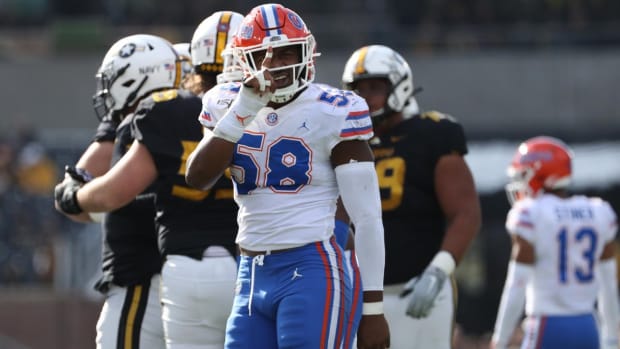Gators' 2020 Stability at Wide Receiver Hinges on Trevon Grimes
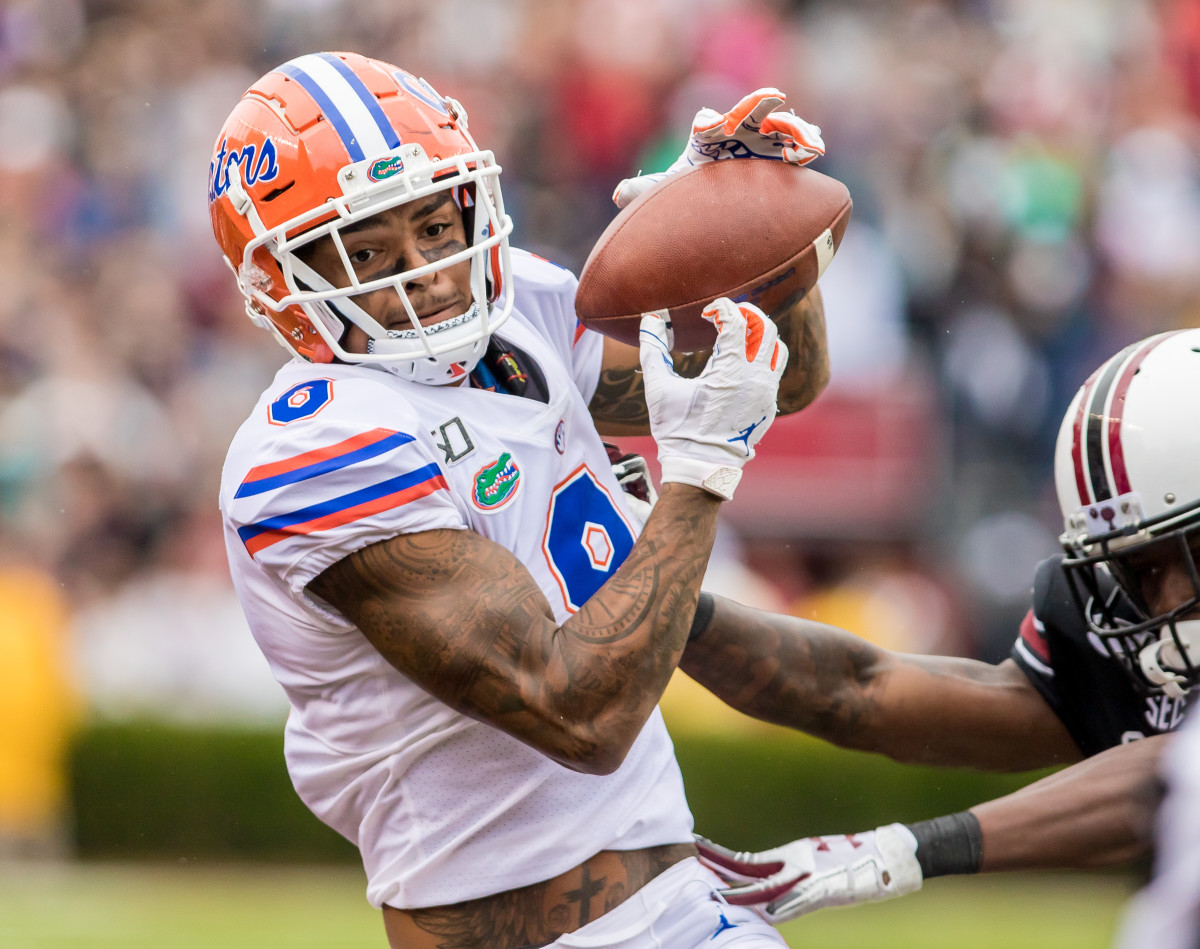
When Florida Gators quarterback Kyle Trask takes the field on Saturdays, he has the luxury of a legitimately two-deep wide receiver corps to throw to.
And one of the nation's most productive tight ends. And the SEC's leading running back in receptions.
That luxury is something that the team prides its self on, and who can blame them? You'd be hard-pressed to find another team in the nation can boast five receivers with 30+ receptions through 11 games. Or a team with seven receivers that have posted at least one game with 50 yards and a touchdown (and that doesn't include reliable slot receiver Josh Hammond).
It's fair to say that Trask, along with Feleipe Franks and Emory Jones, should be thanking wide receivers coach Billy Gonzales for developing their arsenal of weapons in the passing game. Unfortunately, for whoever the starting signal-caller is next year, that arsenal will be significantly less full.
Receivers Van Jefferson, Hammond, Freddie Swain, and Tyrie Cleveland, all of which have started throughout the season, are seniors this season, meaning their time in orange and blue is coming to a close. Those four have accounted for 110 receptions, 1477 yards, and 12 touchdowns this year.
Projected to step up into the roles vacated by seniors are junior receiver Trevon Grimes, redshirt freshman Jacob Copeland, junior Kadarius Toney, and other young and unproven players. A dramatically different, and less experienced, receiving corps than the one Florida owns today.
And to make matters worse, there's a reality where Grimes is out of the equation as well.
The 6-5, 214 lb. receiver has an extraordinary skill-set, paired with a large and lengthy frame and athleticism for his size. Grimes is on record running a 4.48-second 40-yard dash, and jumping a near-34" vertical. He's a deep threat who wins at the boundary more often than not, and is known for making highlight-reel catches.
Being surrounded by polished route runners such as Jefferson, and a coach like Gonzales, Grimes has developed beyond just being a big-bodied redzone target. With improved footwork and hip technique, Grimes has become a more well-rounded receiver since transferring to Florida. And that has made him much more dominant.
However, while anyone would tell you that Grimes often flashes dominance, his ability hasn't translated the box score given the number of other weapons around him. Grimes has the fifth-most targets of any pass-catcher on the team, which has led to 470 yards and three touchdowns on 30 receptions.
Since transferring from Ohio State, Grimes has posted 56 receptions for 854 yards and five touchdowns. Pedestrian production, and now what you'd expect from a player of Grimes' caliber.
Yet, when you look beyond the box score, you truly begin to understand how well Grimes has played. According to Pro Football Focus, Grimes only has one drop on his 36 targets this year, and has converted 23 first downs - that means Grimes moves the chains 76.6% of the time that he has the ball in his hands.
The question is, does Grimes think he's shown enough on tape to leave for the NFL now? Or does he see an opportunity to be the clear-cut WR1 in Florida's offense next year?
That question is one that head coach Dan Mullen will need an answer to as soon as the regular season is over, with early National Signing Day looming.
Should Grimes declare, he'd likely begin as a mid-round prospect given his lack of production and the strength of the receiver position in the 2020 NFL Draft class - it's historic.
However, given his size and athleticism, as well as what evaluators will see on tape when Grimes is involved, he is the type of receiver to shoot up draft boards as the NFL community scouts him more in-depth. Grimes has the talent to be an earlier selection, perhaps even a round two pick, at this point in his career.
Look at Mecole Hardman from Georgia just last year. He may not be as physically dominant as Grimes at 5-10, 187 lbs., but with 4.33 second 40-yard dash speed under his belt at the Combine, all Hardman needed was his 961 yards and seven touchdowns over two seasons to become a second round pick.
Another example would be Jalen Hurd, who came out of Baylor last offseason and ended up an early third round selection. Hurd previously spent three years as a running back at Tennessee, but transferred to Baylor and transitioned to wide receiver in the process.
All it took was one season at the position, where the 6-5, 227 lb. athlete posted 946 yards and four touchdowns, for Hurd to jump up draft boards. Grimes is certainly a candidate to do so if he declares.
This situation would leave Toney and Copeland as the most experienced receivers returning to start next year. While the Gators will still have Kyle Pitts at tight end through 2020, that's not nearly enough at receiver to get by.
Though, it would probably be in Grimes' best interest to return for the 2020 season in order to assume WR1 duties, where he would most likely see a large uptick in targets and help grow his draft floor with production to back up his traits. And with Grimes, then a senior, in house, the Gators can feel much more confident in their receiver room as younger players continue to develop without being rushed onto the field.
Of course, this is assuming the Gators don't go out of their way to continue owning a strong committee of pass catchers to be unpredictable. That could mean throwing young players into the lineup early, such as freshmen Trent Whittemore, Dionte Marks, Ja'Markis Weston, and any prospect signed in the 2020 signing class. Oh, and don't forget about the NCAA transfer portal opportunities...
The bottom line is, Trevon Grimes has a decision to make. His future is certain: He will be an NFL receiver. He has all of the traits that a team looks for in a No. 1 receiver and is only continuing to get better. Right now, Grimes compares to Detroit Lions' starting wide receiver Kenny Golladay, who is on pace to repeat 1000 yard receiving seasons.
Will Grimes jump at the opportunity to hear his name called now and despite the risk of falling in the draft that comes from a lack of production? Or will Grimes take up a final year of school to boost his stock in the 2021 NFL Draft?
Whichever path Grimes elects to take, it's one that will drastically alter the outlook of Florida's passing offense in 2020.


